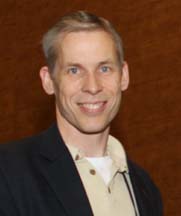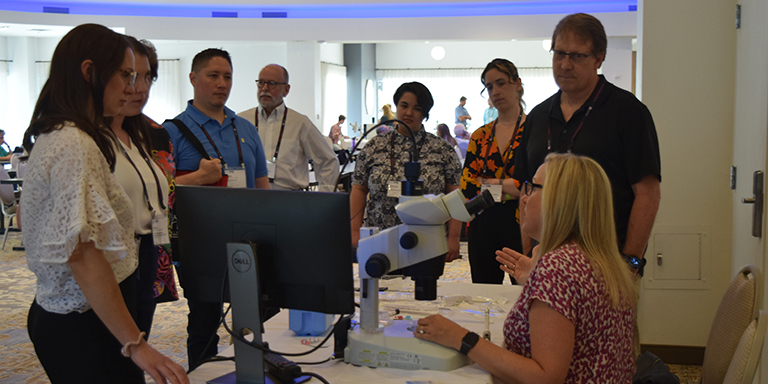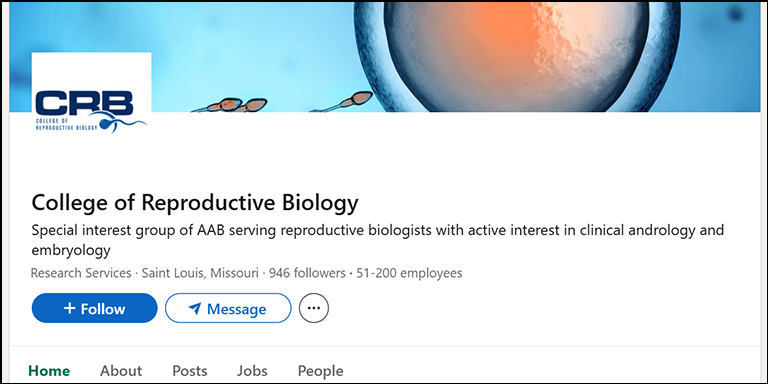Annual Meeting Report: CRB 2013
 |
| Dean Morbeck, Ph.D., HCLD/CC(ABB) |
The 2013 CRB Symposium, developed by the CRB Meeting Committee which consisted of Bill Boone as Chair, myself, Betsy Cairo, Gerry Celia, Amy Sparks and Kelly Wirka, was a diverse program with a new format this year. For the first time the meeting started on Thursday morning and was done by noon on Saturday, giving everyone time to catch a flight Saturday afternoon to be home by Sunday. The weather was fabulous, of course, but the highlights as usual were the informal discussions with friends and colleagues during breaks and over dinner. This meeting continues to be the best place to “catch up” both on developments in the field and with our peers.
The 2013 CRB Symposium opened with a very interesting session on infectious diseases. Betsy Cairo, Ph.D., HCLD/CC(ABB), started the morning with a presentation about Home HIV kits – something most of us are not likely to know much about, yet is an important public health issue. Next Dr. John Hughes from Ohio State gave a provocative presentation on occult hepatitis B, C and HIV, providing evidence that the viruses could be lying dormant in some tissues or blood cell types and thus are not detected during infectious disease testing. While the topic was indeed alarming, the existence of occult infections is highly controversial and the incidence is currently unknown but estimated to be quite rare. To round out the opening session, Sangita Jindal, Ph.D., HCLD(ABB), provided a comprehensive review of best current practices for dealing with gametes from patients who test positive for infectious diseases. While the highest risk to staff is through needlestick and splash exposure, these risks are largely mitigated, though not eliminated, by universal precautions. While many clinics may still not treat patients who test positive for hepatitis or HIV, Dr. Jindal provided compelling evidence that, using special precautions, most clinics should offer services to these patients.
Paul Turek, M.D., opened the afternoon andrology session with an engaging talk about dolphin and walrus sperm… and the reference ranges provided by the WHO 5th edition. His key take-home message: reference ranges are good for homeostatic regulated processes like blood sugar and hormones – not for semen analysis – and thus these reference ranges should not be used as “normal values.” Bill Roudebush, Ph.D., HCLD/ELD/CC(ABB), followed with two talks, the first on obtaining >20% pregnancy rates for IUIs where he described results from his days at RBA. His second talk covered the entire gamut of drugs and homeopathic remedies that may alter fertility. While there is not a lot of data on the latter, the consensus was that anabolic steroids are the most common pharmacological cause of infertility. Dr. Turek rounded out the session with some fascinating data on the relationship between obesity, age and fertility in men. The data presented raised compelling questions as to whether IVF clinics should have limits on paternal age.

The first day ended with two new technologies/products – Sarah Robertson, Ph.D., presented the results of the large GM-CSF trial recently published, and yours truly provided some possibilities for how time-lapse imaging might provide additional benefits beyond improved embryo selection. The GM-CSF story is intriguing as it represents the largest clinical trial ever done for culture media, and while the results are compelling, as with all new developments, time will tell how well this is adopted to clinical practice. Similarly, time-lapse imaging keeps receiving attention in the press and appears to be here to stay, yet questions remain about how much it will improve our ability to select the best embryo. Other benefits, such as a world-class incubator and undisturbed culture and as a tool for laboratory quality management, give added value that is yet to be fully understood.
Friday’s sessions included talks from Barry Behr, Ph.D., HCLD/ELD/CC(ABB); Joe Conaghan, Ph.D., HCLD/ELD/CC(ABB), Rich Weiskopf from Reglera; and the Keynote Address, given by Michael Skinner, Ph.D., Washington State University. Always a tough act in Vegas, Barry did a great job with the first talk after the first night, covering the plethora of options that are in development for non-invasive embryo selection. While time-lapse imaging is the furthest along, with clinical trials underway, others have great potential and will hopefully make the leap from theory to clinical application.
As always, Joe Conaghan provided entertaining talks – and two of them! The first, on blastocyst collapse prior to vitrification, not only illustrated excellent results from Joe’s own experience, but gave many practical tips on how to implement this in your own laboratory. Joe followed this with an insightful look at his program’s practice of selecting which blastocysts are worthy of vitrification, with the take-home message – if you have to ask or aren’t sure whether you should vitrify a blastocyst based on quality – “just do it!”
The highlight of the conference was this year’s Keynote Address, given by Dr. Skinner from WSU. The bad news is that there are many environmental contaminants that cause transgenerational effects that are epigenetic in nature. Think of this – while a fetus is developing in utero and the germ cells are migrating and populating the gonads, these germ cells are susceptible to environmental-induced epigenetic modifications that not only affect the phenotype of the offspring as children or adults, but results in transgenerational transmission to their offspring. While we in clinical reproduction focus on fertility, the alterations in the germ cells extend beyond reproductive function to the entire genome, resulting in alterations in susceptibility to disease and syndromes – such as obesity. Using outbred rats as a model, Dr. Skinner has demonstrated several examples of these transgenerational epigenetic modifications that may not show up in the F1 progeny, but in the F2 and F3 generations. What does this all mean? Environmental exposures to your Mom while you were in utero may not affect you, but can have lasting effects on your germ line. These environmental, epigenetic, transgenerational changes are rapid, some with a 10-fold increase in frequency over a short time – much faster than germ-line mutations. We are seeing rapid changes all around us – obesity, ADHD, autism-spectrum disorders – changes that are difficult to explain by cause and effect of environment (i.e., too much TV, fast food, etc.). These rapidly changing phenotypes make more sense when viewed through the lens of transgenerational epigenetics. Epigenetics is a fascinating field that may be even younger than IVF, so we have a lot to learn – stay tuned! Oh yeah – what’s the good news? These transgenerational effects are unlikely to occur during the massive epigenetic reprogramming that goes on during preimplantation embryo culture. While we aren’t out of the woods yet on effects of in vitro culture, it’s reassuring to hear something positive…
On Saturday, Dr. Behr again drew the short straw to give the first talk of the morning! Barry’s talk on day 3 vs day 5 transfers in the era of time-lapse reiterated several compelling concepts. First – why do we culture to blastocyst? It’s all about selection – of course, since there is no evidence that pregnancy rates are adversely affected by early transfer to the uterus. Barry’s comment, “Embryos don’t get better the longer you culture them, they can only get worse,” reinforces why we need to continue to refine our systems to optimize development.
The remainder of the schedule on Saturday included two talks from Jaffar Ali, Ph.D., who did some of the pioneering work on embryo vitrification in the early 1990s. He has also been actively working on a protein-free culture media for the past 15 years – which reemphasizes the need to continue to innovate in our field. Yours truly rounded out the Symposium with a comprehensive “oil” story – which can be summarized with “buyer beware” as the industry’s ability to screen oil for toxicity is still quite limited.
In closing, I encourage all of you to join your fellow reproductive biologists at next year’s Annual CRB Symposium. In addition to great education, the CRB Symposium is a forum that allows participants to ask questions, talk to speakers and interact with peers in a low-stress environment, not to mention have some fun!
Dean Morbeck, Ph.D., HCLD/CC(ABB)
News Articles
09/12/2013
From the President
09/12/2013
Annual Meeting Report: CRB 2013
09/12/2013
Legislative Committee
09/12/2013
Meeting Committee
09/12/2013
Membership and Credentialing Committee
View pictures from the 2013 CRB Symposium



